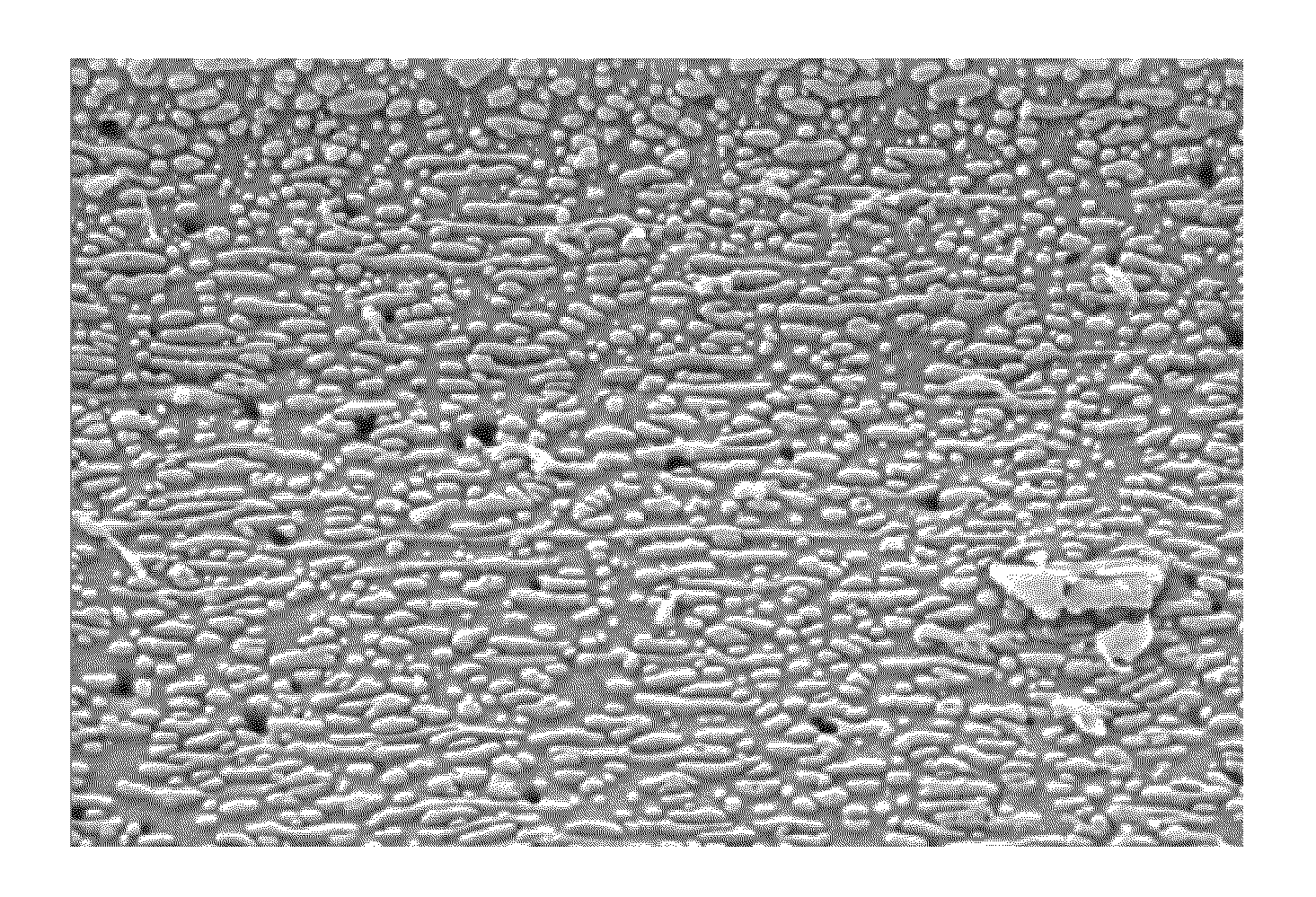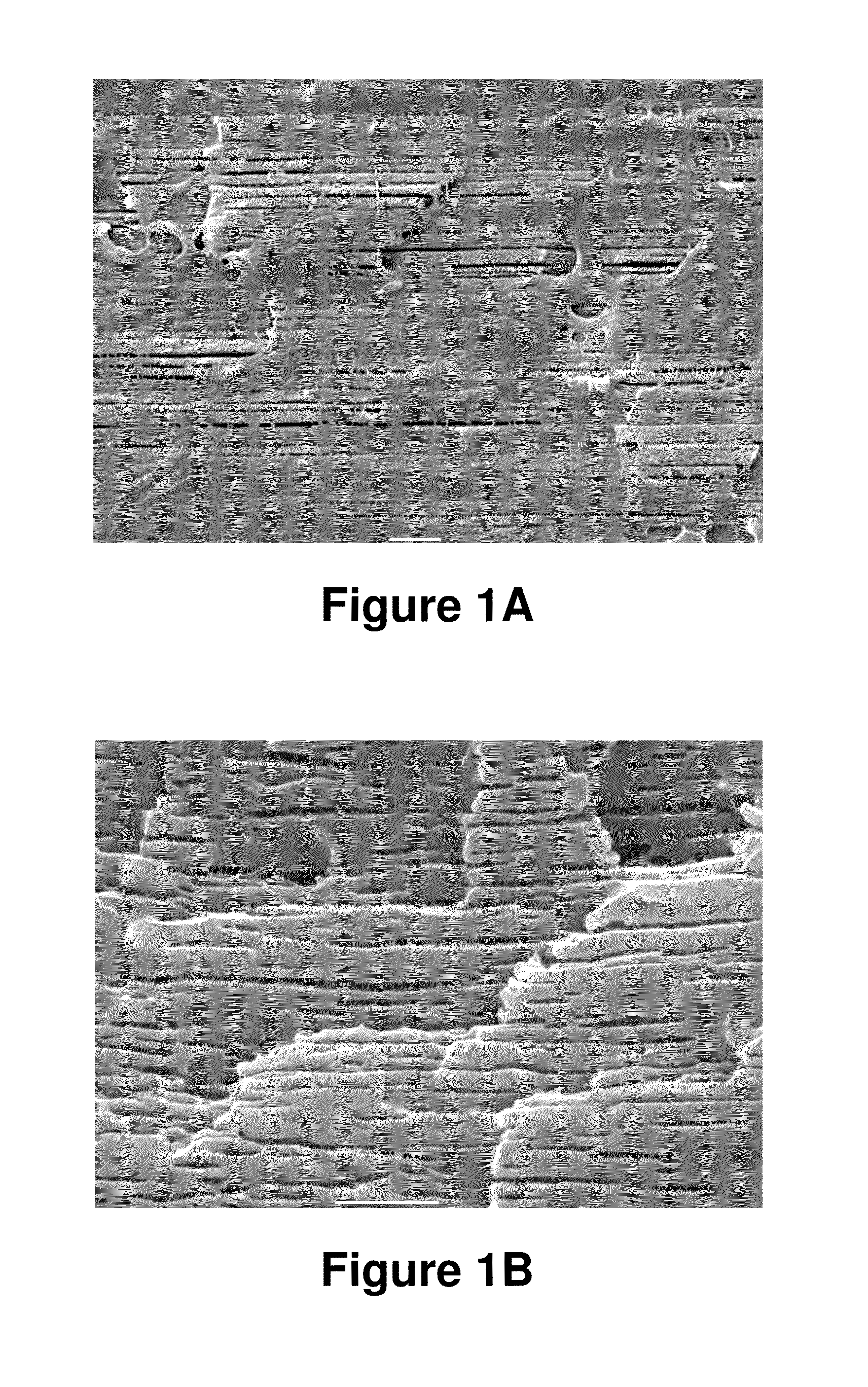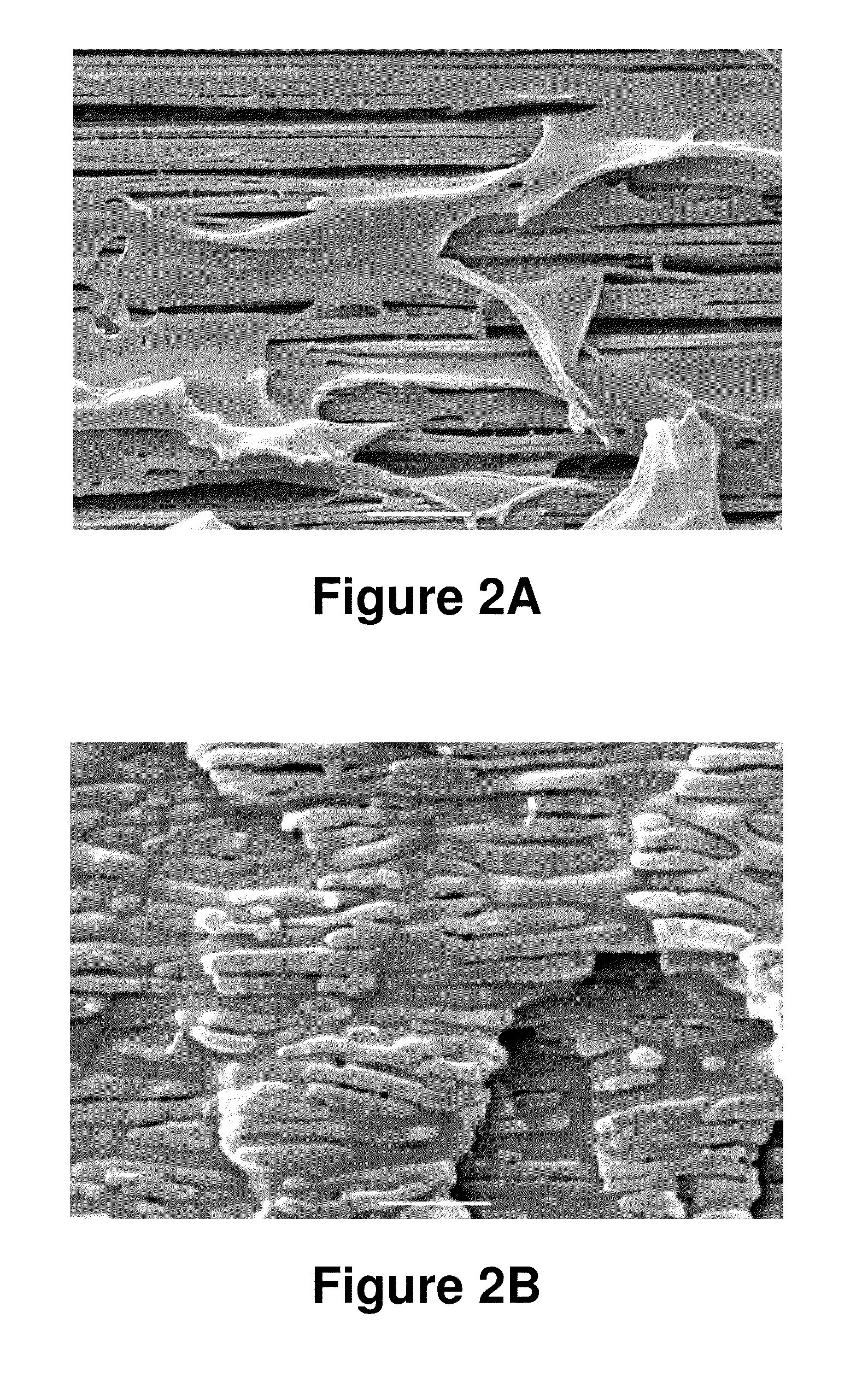Biodegradable blends and films having nano-structural features
- Summary
- Abstract
- Description
- Claims
- Application Information
AI Technical Summary
Benefits of technology
Problems solved by technology
Method used
Image
Examples
example 1
[0054]Films according to the present invention were made on a Thermo Prism™ USALAB 16 twin screw extruder (Thermo Electron Corp., Stone, England), the melt blending and film extrusion were made in the same process; i.e., a direct extrusion and cast film extrusion process. The extruder had 11 zones, numbered consecutively 1-10 from the feed hopper to the die. CAB at 100% was initially added to a feeder that fed the material into feed throat of the extruder. The first barrel received the CAB at a rate of 1.2 lbs / hr. The temperature profile of zones 1 through 10 of the extruder was 175-195° C. for each zone (exact temperatures are listed in Table 4). The die temperature was 180° C. The screw speed was set at 15 rpm and the torque during extrusion process was about 80% to about 85%. Film casting was conducted directly by attaching a 4″ film die on the extruder. The film from the 4″ die was cooled on a chill roll of a film take-up device. The extrusion process and film casting were done ...
examples 2-6
[0055]The melt blending and film casting of PPC and CAB were conducted in the manner described above as in Example 1. The temperature profile of zones and operating conditions are listed in Table 4. All polymers were dry blended and fed to extruder. Film casting was conducted directly by attaching a 4″ film die on the extruder. The extrusion process and film casting were done successfully for all compounded resins.
example 7
[0056]A film of 100% PPC was made in the in the manner described above as in Example 1. A first barrel received the PPC at a rate of 1 lbs / hrs. The temperature profile of zone 1 to zone 10 of the extruder was from about 150° C. to about 175° C. for each zone. The die temperature was 175° C. The screw speed was set at 15 rpm and the torque during extrusion process was around 28%. The extrusion process and film casting were done successfully.
PUM
| Property | Measurement | Unit |
|---|---|---|
| Fraction | aaaaa | aaaaa |
| Fraction | aaaaa | aaaaa |
| Elongation | aaaaa | aaaaa |
Abstract
Description
Claims
Application Information
 Login to View More
Login to View More - R&D
- Intellectual Property
- Life Sciences
- Materials
- Tech Scout
- Unparalleled Data Quality
- Higher Quality Content
- 60% Fewer Hallucinations
Browse by: Latest US Patents, China's latest patents, Technical Efficacy Thesaurus, Application Domain, Technology Topic, Popular Technical Reports.
© 2025 PatSnap. All rights reserved.Legal|Privacy policy|Modern Slavery Act Transparency Statement|Sitemap|About US| Contact US: help@patsnap.com



